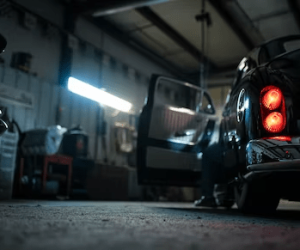People need to be able to drink clean water. Unfortunately, it can be difficult for many to be confident in the purity of their water. Whether the water comes from a tap or other source, there is no real way to know the cleanliness without having a complete lab available to check the water constantly. Fortunately, there are water purification methods that can help ensure water is safe and clean.
Water Purification
Many people trust that the water coming from their faucets is properly cleaned and safe to drink. Unfortunately, this is not always the case. Improper cleaning methods combined with poorly maintained pipes can bring dirty water into any home. The Berkey water filter and other purification methods are available to clean this water to ensure its safety.
Water purification is simply the process of removing substances from water to make it purer. Whether it is chemicals, minerals, toxins, or bacteria, water purification can remove these things to provide safe and clean drinking water.
However, there are different purification methods. Some provide better purification, some are better for removing specific impurities. By understanding these variations, individuals can choose a method that will work best for them.
Instances like the Camp Lejeune lawsuit exemplify how contaminated water actively threatens individuals’ health. Exposure to such contamination can cause severe health issues due to the presence of harmful chemicals, toxins, and bacteria. This underscores the critical importance of understanding and implementing efficient water purification methods. It is crucial to select purification techniques that actively eliminate impurities, ensuring the provision of safe and clean drinking water for you and your family.
Common Options
There are some common methods people use for purifying water. Many of these methods have been around for decades or even centuries to provide safe drinking water. One very common method for purifying water is to boil it. Boiling water for some time will kill bacteria and viruses. It removes chemical additives. However, any impurities in the water will only settle to the bottom. Filtering the water through a microporous sieve is the best way to remove the impurities after boiling.
Chlorinating water is also a common method that can kill microorganisms rather quickly. Iodine is another additive that can kill these organisms to make water safe for drinking. However, these options are only to be used in emergencies as these chemicals can be quite harmful.
Distillation
Distillation of water is a dependable method for removing impurities. However, this process is time-consuming. The distillation process involves collecting condensed water after it has evaporated. This process can be performed by heating water until it all turns to vapor and collecting that vapor.
When the vapor condenses back to liquid, the water is free of any impurities. However, the water vapor must be collected in a different container than the original water is heated. As the water turns to vapor, it leaves behind any minerals or impurities in the original container.
Reverse Osmosis
Reverse osmosis is another purification process that removes many of the impurities water contains. Some find this process able to remove more impurities than distillation. There are many types of purification systems that utilize reverse osmosis.
Reverse osmosis purification utilizes a semipermeable membrane as a filter. The water is forced through this membrane while any impurities are left behind. There are even membranes that offer benefits by allowing some necessary nutrients to pass through while filtering out harmful impurities.
Deionization
Deionization or demineralized water is a process that uses specially manufactured ion exchange resins to remove mineral ions. Most water impurities are dissolved salts. Deionization removes those salts and minerals that can make water unsafe.
UV Light
UV water purification is a process that utilizes UV radiation to disrupt the DNA of microorganisms. When the DNA is disrupted, the microorganisms cannot reproduce. A specific germicidal ultraviolet wavelength is passed over the water to expose any living organisms to the radiation to stop them from causing illnesses.
There are many types of purifiers available that individuals can purchase or even make themselves. By choosing the right options for the individual’s specific needs, they can be ensured that their water is safe and clean.



